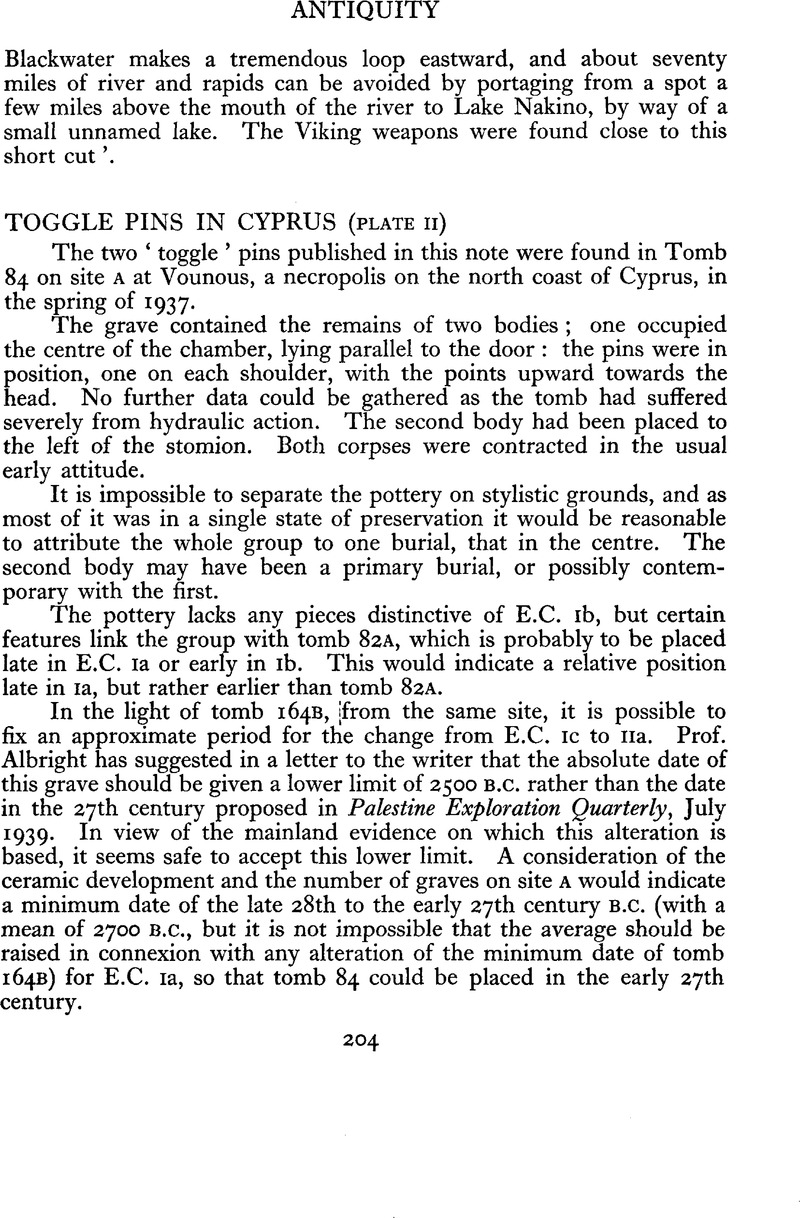Published online by Cambridge University Press: 02 January 2015

1 Quarterly of the Dept. of Antiquities in Palestine, 1936–7, vol. VI, 173.
2 Ibid. p. 181, fig. 7.
3 Ibid. p. 177, fig. 5b.
4 Ibid. p. 178, fig. 6e.
5 Ibid. p. 183, fig. 8.
6 Engberg and Shipton, ‘Notes on the Chalcolithic and Early Bronze Age Pottery of Megiddo’, p. 76, fig. 20 A, B. Guy and Engberg, ‘Megiddo Tombs’, p. 169, nos. 2 and 3; plate 102, nos. 9 and 10. But the best illustration is that used by Madame Henschel-Simon, cf. D.A.P. vi, pl. LXVII, no. 1.
7 Annual of the American Schools of Oriental Research, xin, p. 98; corrected in the text to include 1 and H only.
8 Bulletin of the American Schools of Oriental Research, no. 71, p. 32.
9 Byblos et L’Egypt, p. 123, pl. LXIX. But the type is commoner than Madame Simon supposes :—Syria, X, pl. XXXVII; Dunand, ‘Fouilles de Byblos,’ pl. LXIX and CIV.
10 AASOR. XVII, p. 25.
11 Liverpool Annals of Archaeology, VI, 87 ff, pl. XXI.
12 Q.D.A.P. VI, p. 183.
13 Excavations at Tepe Gawra, I, 114.
14 Iraq, IV, 132, no. 5, fig. 12, no. 5.
15 Schmidt : Schliemanns Sammlung, no. 6411, p. 254. Dörpfeld : ‘Troja und Ilion’, I, p. 357, fig, 295.
16 American Journal of Archaeology, 1934, p. 230.
17 The Alishar Hüyük; seasons of 1928 and 1929, I, p. 60, fig. 69, no. b512.
18 Megiddo Tombs, p. 169.
19 The Alishar Hüyük; seasons of 1930–32, II, 258, fig. 283.
20 Eurasia Septentrionalis, VII, 113 ff.
21 Also illustrated by Hubert, Syria, VI, 24, fig. 7.
22 Q.D.A.P. VI, 180.
23 Swedish Cyprus Expedition, I, p. 93, pl. XXIII.
24 Palestine Exploration Quarterly, op. cit.
25 Myres, Handbook of Cesnola Collection, p. 475.
26 Tomb 318, no. 24, S.C.E. I, p. 127, pl. XXII and CXLIV (no. 4).
27 As assumed in Megiddo Tombs, p. 169.
28 Troja and Ilion, I, op. cit.
29 The similar pin from Alaca Höyük (Türk Tarih Kurumu, Belleten, 1937, I, 238, fig. 5, no. 28, and Alaca Höyük Hafriyati, 1935, pl. LXI, 28), appears to have had the hole drilled after casting. The period would appear to be of the Hittite Empires.